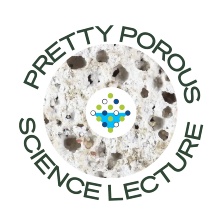We are pleased to announce that Alexander Heinlein, researcher at the Institute of Applied Mathematics of the TU Delft (The Netherlands), will give the SFB 1313 "Pretty Porous Science Lecture" #11. His talk will be on "Surrogate Models for Computational Fluid Dynamics Simulations Using Convolutional Autoencoder Neural Networks and Physical Constraints".
Date: Tuesday, 7 December 2021
Time: 4:00 pm CET
Speaker: Dr. Alexander Heinlein, TU Delft (The Netherlands)
Lecture title: "Surrogate Models for Computational Fluid Dynamics Simulations Using Convolutional Autoencoder Neural Networks and Physical Constraints"
Place: The lecture will be a hybrid lecture. A small audience is possible in Pfaffenwaldring 61 MML, additionally the lecture is offered online. After registration, you will receive the meeting information.
Registration: https://www.sfb1313.uni-stuttgart.de/events/lecture-series/
Abstract
Simulations of fluid flow are generally very costly because high grid resolutions are not only required to obtain quantitatively accurate results, but too low grid resolutions may also lead to qualitatively incorrect results. In applications, however, one is often not interested in accurate approximations of the complete flow field but only in the qualitative behavior of the flow or in individual quantities (e.g., maximum velocity, pressure drop within a section of a pipe, or wall shear stresses at certain locations).
In this talk, the use of convolutional autoencoder neural networks to construct efficient reduced order surrogate models for high fidelity computational fluid dynamics (CFD) simulations is discussed; cf. [1,2]. Using this approach, which is inspired by [3], it is possible to build surrogate models for varying geometries. In particular, the geometry is the input of the neural network, and the flow and pressure fields are the output. The proposed framework is very general since the geometry and solution fields are simply encoded as pixel images, which allows the application to various types of geometries; also the extension to other physics is, in principle, straight forward. In order to construct accurate surrogate models, U-Net [4] type convolutional neural networks, which are very successful in image recognition and segmentation tasks, are employed and the architecture and hyper parameters are optimized to this application. As a first step, a fully supervised approach, which requires the availability of simulation results as the training data, is presented. Here, the choice of an appropriate loss function is crucial to obtain good results. After that, results for a newer unsupervised approach, which does not require CFD simulation results but is based on introducing physical constraints via the loss function.
As a testbed for the surrogate models, the flow around obstacles with varying shape and size within a channel is considered. Moreover, results for the application to geometries of arteries with aneurysms are presented. In both cases, only two-dimensional configurations are considered for now. The results show that the surrogate models provide good predictions of the flow and pressure fields while being computationally much cheaper compared to classical CFD codes. In particular, the predictions can be performed on a workstation within a fraction of a second, without requiring the generation of a computational mesh. When evaluated on GPUs, the prediction time can be further reduced by factor of more than ten.
The talk is based on joint work with Matthias Eichinger, Viktor Grimm, and Axel Klawonn (University of Cologne).
References
[1] Matthias Eichinger, Alexander Heinlein, and Axel Klawonn. "Stationary flow predictions using convolutional neural networks." Numerical Mathematics and Advanced Applications ENUMATH 2019. 2021.
[2] Matthias Eichinger, Alexander Heinlein, and Axel Klawonn. "Surrogate Convolutional Neural Network Models for Steady Computational Fluid Dynamics Simulations." Submitted December 2020.
[3] Xiaoxiao Guo, Wei Li, and Francesco Iorio. "Convolutional neural networks for steady flow approximation." Proceedings of the 22nd ACM SIGKDD international conference on knowledge discovery and data mining. 2016.
[4] Olaf Ronneberger, Philipp Fischer, and Thomas Brox. "U-net: Convolutional networks for biomedical image segmentation." International Conference on Medical image computing and computer-assisted intervention. Springer, Cham, 2015.


